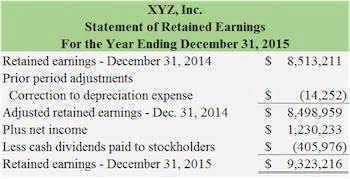
The theory behind the equation is that the company’s obligation to pay dividends is the cost of paying shareholders and therefore the cost of equity. Return on equity is a measure that analysts use to determine how effectively a company uses equity to generate a profit. It is obtained by taking the net income of the business divided by the shareholders’ equity. Net income is the total revenue minus expenses and taxes that a company generates during a specific period. If shareholders’ equity is positive, that indicates the company has enough assets to cover its liabilities. But if it’s negative, that means its debt and debt-like obligations outnumber its assets.
What Does the D/E Ratio Tell You?
Companies with low equity multipliers typically have a stronger financial position and are better able to withstand economic fluctuations. Understanding whether a company has a high or low equity multiplier is crucial for investors and financial analysts to assess the company’s risk profile and make informed investment decisions. This ratio helps investors and financial analysts understand the leverage of a company and its capital structure. A higher equity multiplier indicates that a company relies more on debt financing, which can potentially amplify returns but also increases financial risk. Conversely, a lower equity multiplier suggests that the company is more conservatively financed with a higher proportion of assets funded by equity rather than debt.
How Do Stock Buybacks Impact Shareholders Equity?

A firm typically can raise capital by issuing debt (in the form of a loan or via bonds) or equity (by selling stock). Investors usually seek out equity investments as it provides a greater opportunity to share in the profits and growth of a firm. The equity of a company is the net difference between a company’s total assets and its total liabilities.
How Shareholder Equity Works
Think of retained earnings as savings since it represents a cumulative total of profits that have been saved and put aside or retained for future use. Retained earnings grow larger over time as the company continues to reinvest a portion of its income. Company equity is an essential metric when determining the return total equity formula being generated versus the total amount invested by equity investors. Upon calculating the total assets and liabilities, company or shareholders’ equity can be determined. For example, the equity of a company with $1 million in assets and $500,000 in liabilities is $500,000 ($1,000,000 – $500,000).
- This equation is the basis for the balance sheet, which summarizes a company’s financial position at a specific point in time.
- A company with positive shareholders’ equity has enough assets to cover liabilities.
- The formula for calculating the equity ratio is equal to shareholders’ equity divided by the difference between total assets and intangible assets.
- Generally speaking, a D/E ratio below 1 would be seen as relatively safe, whereas values of 2 or higher might be considered risky.
- These are generally long-term investments that can take upwards of 10 years to pay out.
How Do You Calculate Equity in a Private Company?
- Finally, if we assume that the company will not default over the next year, then debt due sooner shouldn’t be a concern.
- Because shareholder equity is equal to a company’s assets minus its debt, ROE could be considered the return on net assets.
- The cost of debt and a company’s ability to service it can vary with market conditions.
- For example, a prospective mortgage borrower is more likely to be able to continue making payments during a period of extended unemployment if they have more assets than debt.
- A steadily rising D/E ratio may make it harder for a company to obtain financing in the future.
Learn financial statement modeling, DCF, M&A, LBO, Comps and Excel shortcuts. In other words, the cost of debt is lower for established companies operating in mature low-risk markets, albeit the notion that the automotive industry is not at risk of disruption is misinformed. The equity value is the fair market value (FMV) of a company’s common equity at present. But if a company has grown increasingly reliant on debt or inordinately so for its industry, potential investors will want to investigate further. Gearing ratios constitute a broad category of financial ratios, of which the D/E ratio is the best known. The personal D/E ratio is often used when an individual or a small business is applying for a loan.
Market Value vs. Book Value (Future vs. Past)
Examining the return on equity of a company over several years shows the trend in earnings growth of a company. For example, if a company reports a return on equity of 12% for several years, it is a good indication that it can continue to reinvest and grow 12% into the future. Treasury stocks are repurchased shares of the company that are held for potential resale to investors. It is the difference between shares offered for subscription and outstanding shares of a company. Suitable asset allocation will help businesses grow, resulting in a higher amount of money from stock purchasers and ETF managers.

The D/E Ratio for Personal Finances
- As for the “Treasury Stock” line item, the roll-forward calculation consists of one single outflow – the repurchases made in the current period.
- Shareholders’ equity is the same as a firm’s total assets minus its total liabilities.
- When using the D/E ratio, it is very important to consider the industry in which the company operates.
- The underlying principle generally assumes that some leverage is good, but that too much places an organization at risk.
- When calculating the shareholders’ equity, all the information needed is available on the balance sheet – on the assets and liabilities side.